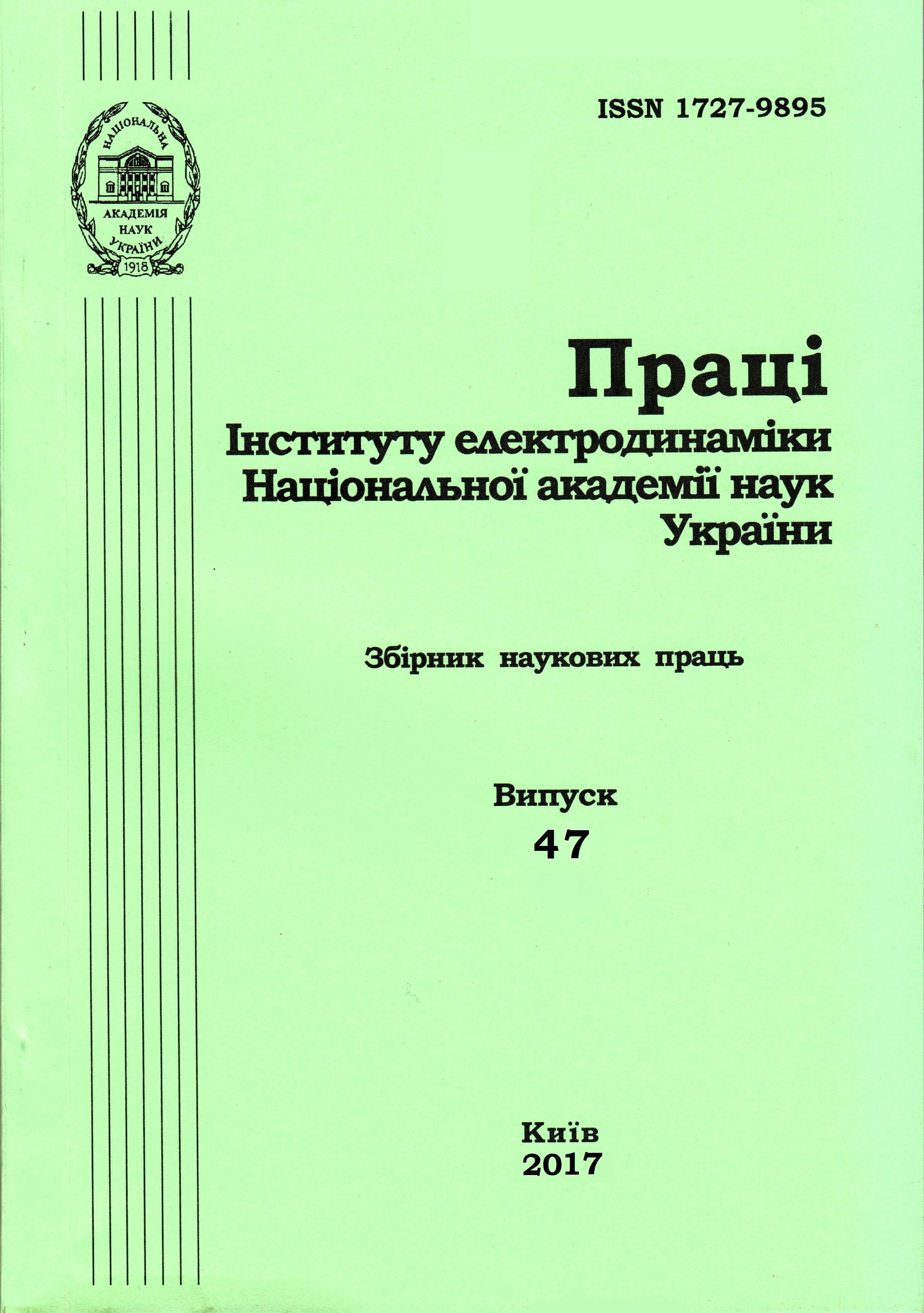Abstract
The mathematical modeling and analysis of a water tree development processes between water micro-inclusions in cross-linked polyethylene (XLPE) insulation of extra high voltage cables and its effect on the electric field disturbances in the dielectric were done. The inclusions, connected by tree with variable cross-section of the so-called "string of pearls" configuration were discovered. A comparative analysis of inhomogeneous distribution of electric field, stressed volumes, currents density and electromechanical forces in insolation depending on the number of conductive tree branches was performed. The areas of the greatest field disturbances, caused by those micro-defects in the dielectric, which contribute degradation processes and reduce a resource of XLPE material were determined. References 14, figures 3.
References
Landau L.D., Lifshitz E.M. Electrodynamics of continuous media. M.: Nauka. 1980. 560 p.
Podoltsev A.D., Kucheryavaya I.N. Multiphysics simulation in electrical engineering. K .: Institute of Electrodynamics of the National Academy of Sciences of Ukraine, 2015. 304 p.
Shidlovsky A.K., Shcherba A.A., Zolotarev V.M., Podoltsev A.D., Kucheryavaya I.N. Cables with polymer insulation for extra high voltage. K .: Institute of Electrodynamics of the National Academy of Sciences of Ukraine, 2013. 550 p.
Shcherba M.A. Features of local amplification of the electric field by conductive inclusions in non-linear polymer insulation. Tekhnichna Elektrodynamika. 2015. No. 2. P. 16–23.
Shcherba M.A. Influence of the electrical conductivity of water treeings on the current and pressure densities arising in polyethylene insulation. Tekhnichna Elektrodynamika. 2016. No. 4. P. 14–16.
Burkes K.W., Makram E.B., Hadidi R. Water Tree Detection in Underground Cables Using Time Domain Reflectometry. IEEE Power and Energy Technology Systems Journal. 2015. Vol. 2(2). P. 53–62.
https://www.comsol.com/, "Comsol Inc." Burlington, MA, 2017.
Hvidsten S., Ildstad E., Sletbak J., Faremo H.A.F.H. Understanding water treeing mechanisms in the development of diagnostic test methods. IEEE Trans. on DEI. 2008. No. 5(5). P. 754–760.
Kurihara T., Okamoto T., Kim M.H. Measurement of residual charge using pulse voltages for water tree degraded XLPE cables diagnosis. IEEE Trans. on DEI. 2014. No. 21(1). P. 321–330.
Muhamad N.A., Sanniyati C.N., Arief Y.Z., Adzis Z. Water tree in polymeric cables: a review. Malaysian Journal of Fundamental and Applied Sciences. 2016. No. 12(1).
Tao W., Song S., Zhang Y., Hao W. Study on the electric-field characteristics of water tree region on the dry or wet condition in XLPE cables. High Voltage Engineering and Application. 2016. P. 1–4.
Saniyyati C.N., Arief Y.Z., Ahmad M.H., Piah M.A.M. Investigation on propensity difference of water tree occurrences in polymeric insulating materials. IEEE Intern. Conf. on Power Engineering and Optimization Con-ference (PEOCO). 2014. P. 413–417.
Wang W., Tao W., Ma Z., Liu J. The mechanism of water tree growth in XLPE cables based on the finite element method. High Voltage Engineering and Application. 2016. P. 1–4.
Zhou K., Li K., Yang M., Huang M. Insight into the influence of mechanical orientation on water tree propagation according to abnormal water tree shapes (2016, July). IEEE Intern. Conf. In Dielectrics (ICD). 2016. Vol. 2. P. 836–839.

This work is licensed under a Creative Commons Attribution-NonCommercial-NoDerivatives 4.0 International License.
Copyright (c) 2023 М.А. Щерба
